
AUS soldier from 1st Platoon Alpha Company 3-187 3BCT 101 Airborne takes position as an Afghan family look at him from their house during a patrolling in Yosef Khel district of Paktika province on April 1, 2010. Orphans carry their chairs to prepare an open classroom in Kabul orphanage, Afghanistan, April, 15, 2003. AFP PHOTO/MASSOUD Hossaini
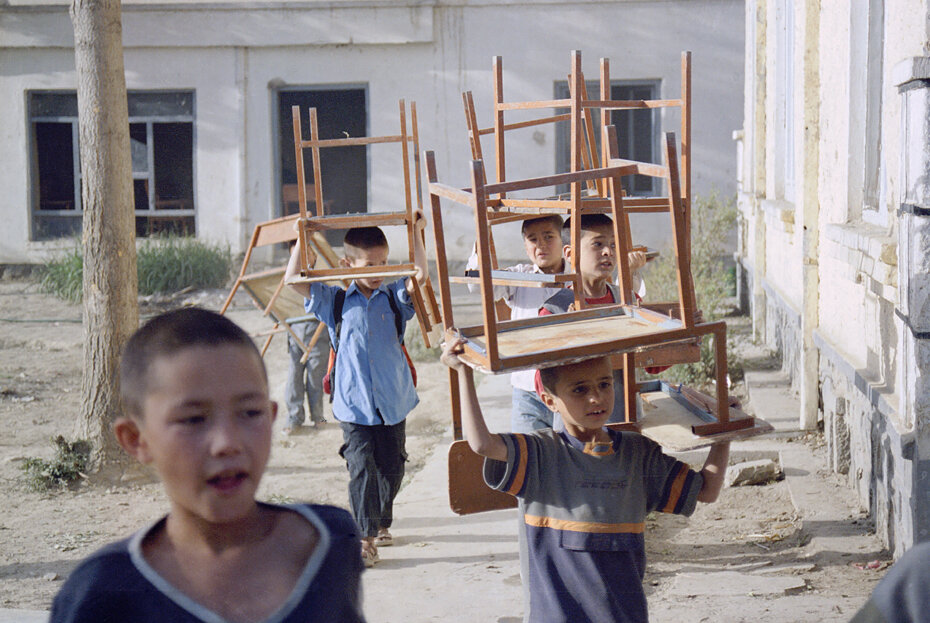
Orphans carry their chairs to prepare an open classroom in Kabul orphanage, Afghanistan, April, 15, 2003. AFP PHOTO/MASSOUD Hossaini

An Afghan policeman looks on near a Bank, attacked by Taliban fighters in Kabul on August 19, 2009. Security forces killed three gunmen who stormed a bank building in central Kabul and were searching for any more attackers who may be inside, police said, blaming the raid on the Taliban. “We have killed three of the attackers inside the bank,” Kabul criminal investigation police chief Sayed Abdul GhafarSayedzada told AFP. “They were Taliban,” he said. AFP PHOTO/MASSOUD Hossaini

Villager children look at a camerawoman during a set up for photography in Istalif village, north of Kabul, Afghanistan, March, 27, 2005.
AFP PHOTO/MASSOUD Hossaini

Afghan National Army (ANA) soldier shouts at the site of a blast which struck vehicles of the NATO-led force in Afghan capital Kabul on September 17, 2009. AFP PHOTO/MASSOUD Hossaini

An Afghan boy stands inside an old synagogue undergoing renovation in the old part of Herat city, north east of Kabul, 17 September 2007. AFP PHOTO/MASSOUD Hossaini

US Army soldiers from 1st Platoon Alpha Company 3-187 3BCT 101 Airborne walk during an early morning patrolling in Yosef Khel district of Paktika province on April 3, 2010. AFP PHOTO/MASSOUD Hossaini

A US soldier from 1st Platoon Alpha Company 3-187 3BCT 101 Airborne walks during a patrolling in Yosef Khel district of Paktika province on April 1, 2010. AFP PHOTO/MASSOUD Hossaini

Afghan men break their fast at the time of iftar, during the holy month of Ramadan in Kabul on September 1, 2009. Islam’s holy month of Ramadan is calculated on the sighting of the new moon. AFP PHOTO/MASSOUD Hossaini

An Afghan man clears the snow from the roof of his house in Kabul, 08 January 2008. At least 19 people were killed, 16 were missing and scores of others including more than 200 policemen were stranded after heavy snow falls hit Afghanistan this week, officials said. AFP PHOTO/MASSOUD Hossaini

An Afghan woman walks with her children on a street in destroyed neighborhood of Kabul, 05 January 2008. AFP PHOTO/MASSOUD Hossaini
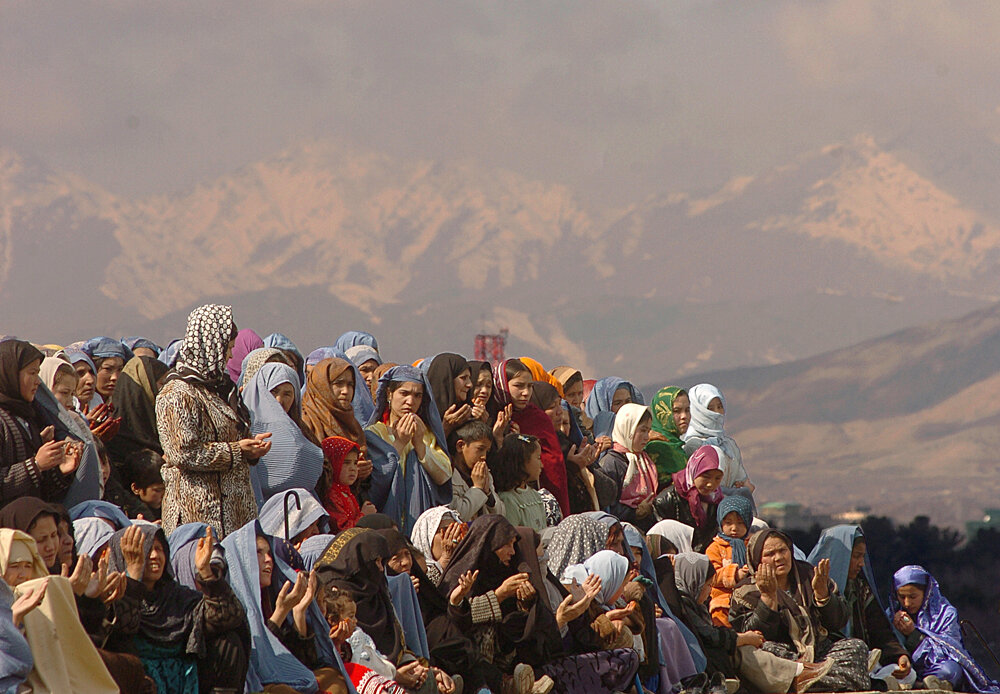
Afghan women offer prayers at a shrine in Kabul, 21 March 2007, as part of hold the celebrations surrounding Naw Rooz, (Afghan and Persian New Year). Naw Rooz is is one of the oldest holidays celebrated in Central Asia, and is marked by feating and the annual raising of a pole and holy flags, a time in which some believe miracles can happen. AFP PHOTO/MASSOUD Hossaini

Afghan nomad women sit on the ground near their tent in Kabul on July 06, 2008. Estimates are that up to 80 percent of economic activity in Afghanistan is undertaken by informal players who do not have adequate incentives or mechanisms to formalize their business activities. Excluding the probable multi-billion dollars in opium production, it is estimated that the private sector contributes to approximately 89 percent of total gross domestic product. AFP PHOTO/MASSOUD Hossaini

Afghan boy Zaryalai, 12, lies surrounded by relatives during a ceremony before his funeral, a day after he was shot in the head, in Kabul, 23 March 2007. A distraught Afghan father said his 12-year-old son was shot in the head by foreign troops in the latest in a series of civilian deaths involving international forces. The Afghan interior ministry confirmed the killing late 22 March, saying NATO troops opened fire on a minivan 'which apparently tried to overtake the troops or maybe the car was too close to the troops. AFP PHOTO/MASSOUD Hossaini

A small room where people talk with their detained relatives via video-teleconference at ICRC office in Kabul, 14 January 2008. The families of about 60 detainees at the largest US base in Afghanistan, at Bagram, had seen and spoken to their relatives in video conference calls according to the International Committee of the Red Cross. AFP PHOTO/MASSOUD Hossaini
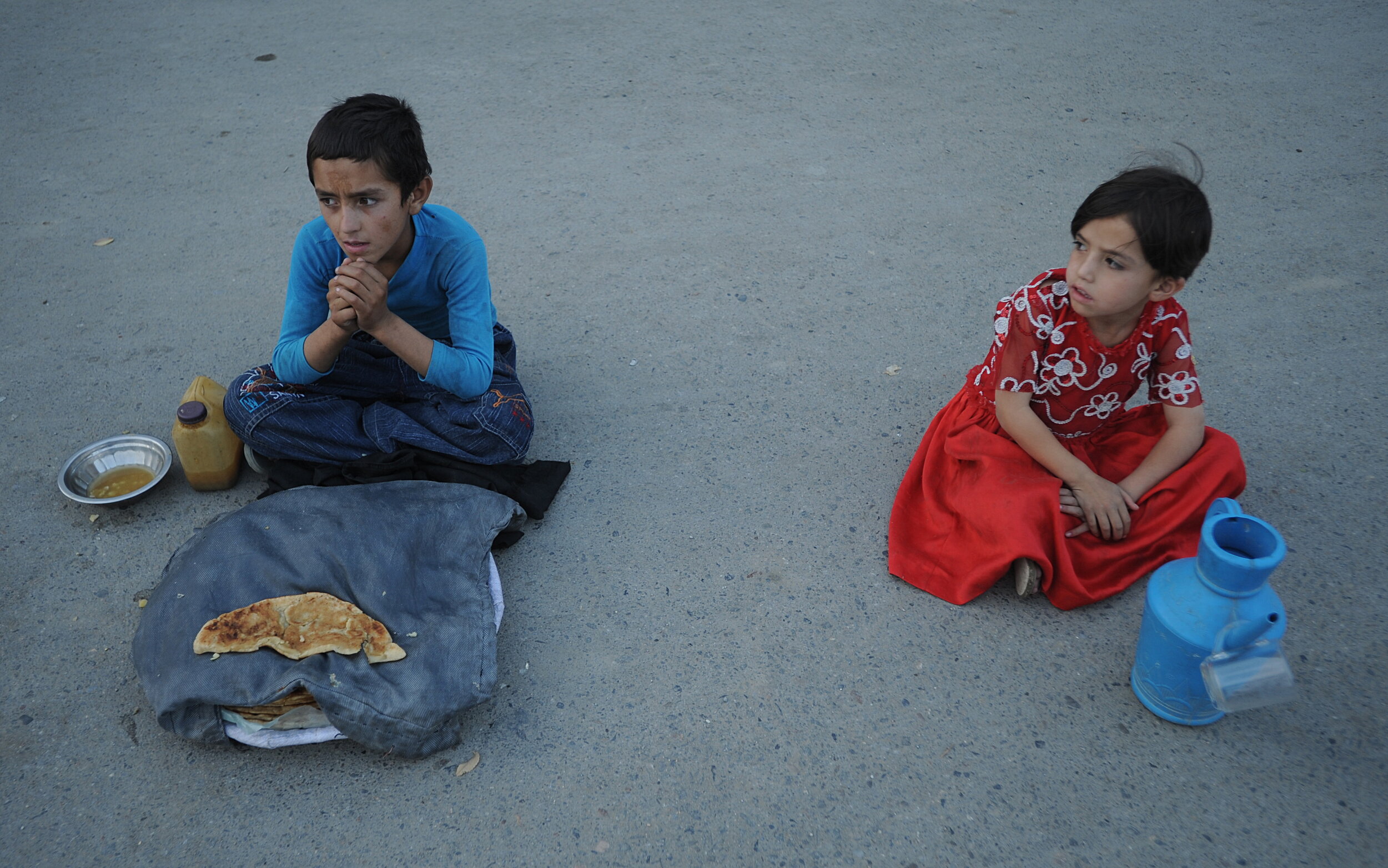
Afghan children sell their food and water at the time of Iftar (Time to break fasting) during the holy month of Ramadan in Kabul on August 30, 2009. Islam's holy month of Ramadan is calculated on the sighting of the new moon. Muslims all over the world are supposed to fast from dawn to dusk during the month and dates are usually eaten to break the fast. AFP PHOTO/Massoud HOSSAINI

A French soldier from ISAF sits near his vehicle in Behsud district in Wardak province about 100 kilometers east of Kabul, July 25, 2008. A local dispute erupted when Kuchi nomads moved into Behsud, in search of grazing land for their husbandry animals. Hazaras say that the nomads, who are ethnic Pashtuns, forced their way into the village, killed several people, and destroyed houses and crops. AFP PHOTO/MASSOUD Hossaini

The mourners of Ashura hold candles on the occasion of the first night of the martyrdom of Imam Hussein and his companions . AFP PHOTO/MASSOUD Hossaini

A US soldier (L) sits alert in a Marine Chinook helicopter while flying over camp Bastion in Helmand province, southwest of capital Kabul on May 3, 2008. About 3000 British troops along with Danish, Estonian, Czech and American troops are based in Camp Bastion in the middle of a desert in Helmand province, in southern Afghanistan. AFP PHOTO/MASSOUD Hossaini

Afghan people gather at a shrine in Kabul, 21 March 2007, as part of hold the celebrations surrounding Naw Rooz, (Afghan and Persian New Year). Naw Rooz is is one of the oldest holidays celebrated in Central Asia, and is marked by feating and the annual raising of a pole and holy flags, a time in which some believe miracles can happen. AFP PHOTO/MASSOUD Hossaini

Children play in a destroyed building in Kabul, Afghanistan, June, 11, 2002. AFP PHOTO/MASSOUD Hossaini

An orphan looks on as he participates in a class in Kabul Orphanage, Afghanistan, April, 17, 2003. Two decades of war in Afghanistan have left many thousands of orphans and abandoned children across the country. AFP PHOTO/MASSOUD Hossaini

An Afghan army soldier prevents journalists to take picture at the side of a suicide attack in Kabul, 02 October 2007. At least 11 people were killed and seven wounded in a suicide attack on a police bus in the Afghan capital Kabul early Tuesday, a government official told AFP, updating an earlier toll. The dead included six policemen who had been on the bus and five civilians, among them three children who were going to school, interior ministry spokesman Zemarai Bashary told AFP. AFP PHOTO/MASSOUD Hossaini

Afghan girls stand as they watch the road from Shultan to Asad Abad city in Kunar province, east of capital Kabul on October 8, 2008. About twenty thousand people fled the clashes between Pakistani government and Taliban in Bajaur agency, a tribal area in northwest Pakistan, according to the UN. They came to Kunar, Afghanistan, where people from the same Pashtun tribe live and provided them with shelter. AFP PHOTO/MASSOUD Hossaini

An Afghan girl rides at an amusement park on the last day of Eid al-Fitr, 14 October 2007 in Kabul. The muslim holiday marks the end of the holy month of Ramadan. AFP PHOTO/MASSOUD Hossaini
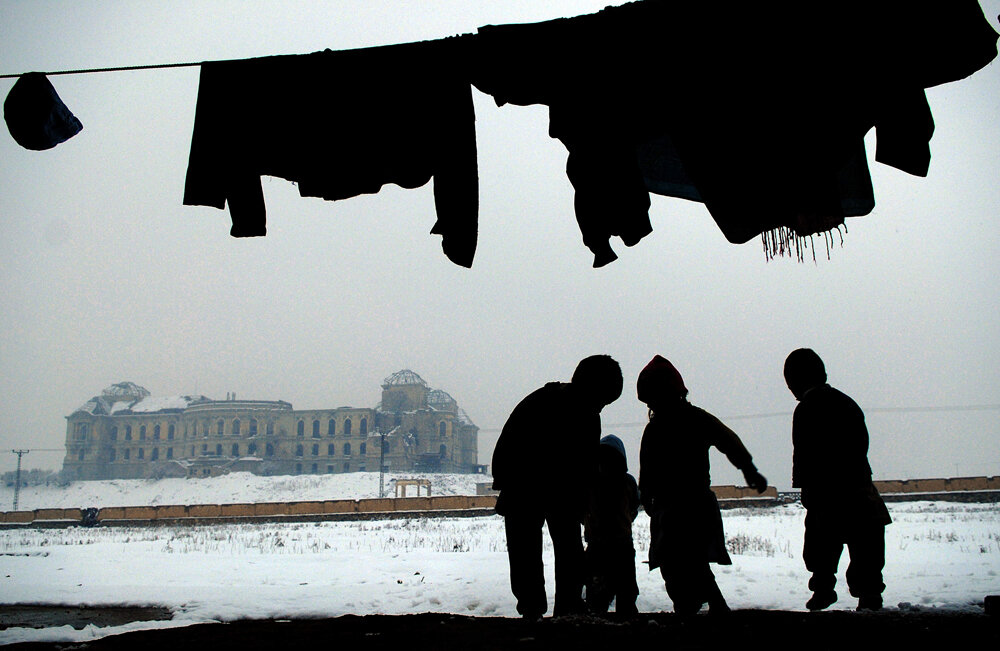
Afghan children play infront of their house in a destroyed erea in Kabul, 05 January 2008. The seasonal increase in the price of coal and wood works as a tool to warn war-weary Afghans that winter is arriving to make the already poverty stricken life of many Afghans more difficult. AFP PHOTO/ MASSOUD Hossaini

An Afghan woman singer, Farida Tarana (R) sings at a studio in Kabul on February 12, 2008. Fundamentalists in Afghanistan still frown upon women singing on television but the younger generation is setting new boundaries in art and culture. AFP PHOTO/MASSOUD Hossaini
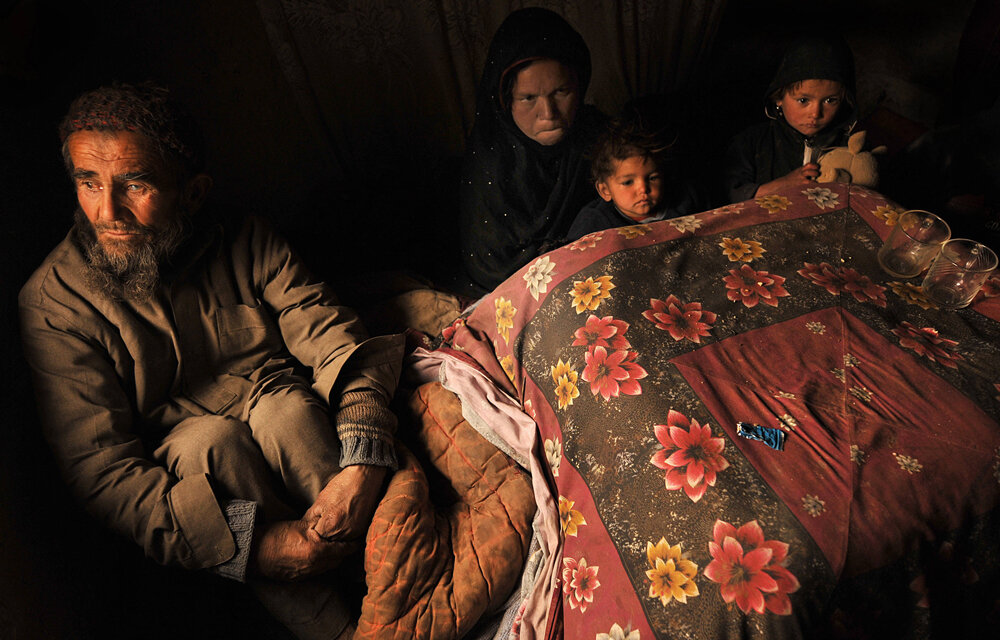
An Afghan man, Sakhi 65 (L) sits on the ground with his family at his house in Kabul on February 16, 2008. More than 500 homes, mostly traditional mud brick houses, have been destroyed and tens of thousands damaged by the heaviest snowfalls in 30 years, as according to the latest figures, nearly 1000 people have died since the start of the winter across the country. AFP PHOTO/MASSOUD Hossaini

An Afghan boy shows his broken kite on a hill overlooking the city of Kabul, 11 January 2008. As with music and other forms of entertainment, kite flying was forbidden during the Taliban period. AFP PHOTO/MASSOUD Hossaini

Shiite Muslim men pray during overnight ritual prayers in Kabul in late hours of September 10, 2009, marking the start of the Shab-e Qadr ceremonies which celebrate the night in which the holy Koran was first revealed to the Prophet Mohammed through the angel Gabriel. Observant Muslims pray all night long for mercy and salvation in a ritual known locally as "Ehyaa" or "Revival", one of the most important ceremonies of the holy month of Ramadan. AFP PHOTO/Massoud HOSSAINI

An Afghan man, Mohammad, 37, first right talks to his son Asif (C) while they weave a carpet on a loom at their home in Kabul on June 10, 2008. For centuries, Afghanistan was recognized as a global leader in carpet production. But after the Taliban took power, many Afghan carpet makers fled to Pakistan. Since the Taliban were defeated in 2001, some 60 percent of the carpet makers who fled have returned to their homeland. AFP PHOTO/Massoud HOSSAINI

An Afghan addicted man sit on the ground as he talks to photographer in a destroyed building in Kabul on June 16, 2008. Afghanistan is the world's top producer of opium, which is also used to produce heroin, and while fewer than four percent of the population is believed to use drugs or alcohol, according to the UN survey, experts have warned this could rise. AFP PHOTO/Massoud HOSSAINI
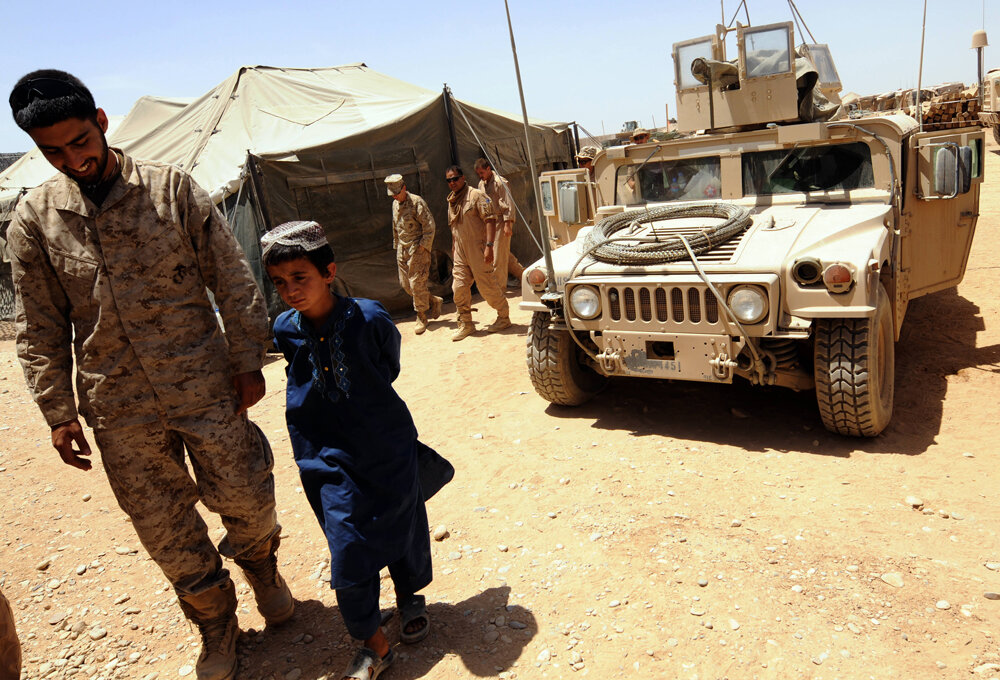
An Afghan boy Aziz, 10, walks with an afghan man as he injured by Taliban in his village Garmser at Camp Dwyer in south of Helmand Province on May 5, 2008. Us Marine soldiers push out Taliban from Garmser village several days ago.Helmand, the main source of Afghanistan's opium output, is in the grip of a Taliban-insurgency launched after it was toppled from government in a US-led invasion in late 2001. Most ISAF soldiers in Helmand are British, and were joined by US Marines last week in a push to remove the Taliban from around southern Garmser district. AFP PHOTO/Massoud HOSSAINI
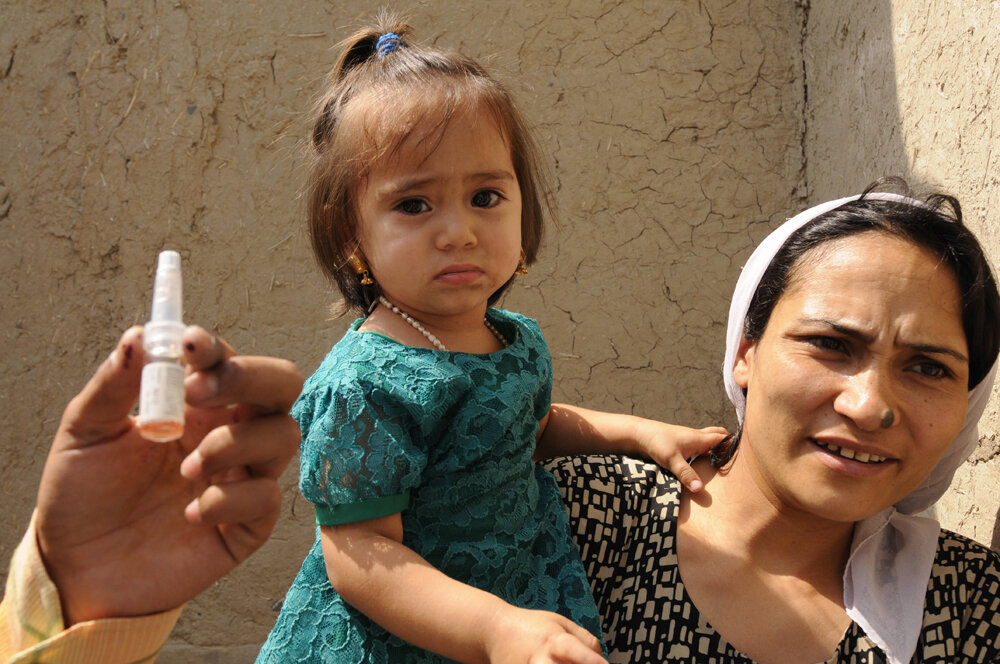
An Afghan mother holds her child before receiving a drop of polio vaccinate during a new round of polio vaccinations in Kabul on August 3, 2008, Afghanistan has this year recorded 13 new cases of polio, which is only endemic in three other countries worldwide, the health minister said Saturday. Almost all the new cases were in the southern provinces, which see the worst of a deadly Taliban rebel-linked insurgency, with the insecurity hampering efforts to wipe out the crippling disease. AFP PHOTO/MASSOUD Hossaini

Afghan horsemen talk during a competition in a Buzkashi game in Kabul, 02 November 2007.Buzkashi is an Afghan national sport which is played between two teams of horsemen competing to throw a goat into a scoring circle. AFP PHOTO/MASSOUD Hossaini.

Tarana Akbari, 12, screams in fear moments after a suicide bomber detonated a bomb in a crowd at the Abul Fazel Shrine in Kabul on December 06, 2011. Out of 17 women and children from her family who went to a riverside shrine in Kabul that day to mark the Shiite holy day of Ashura, seven died including her seven-year-old brother Shoaib. More than 70 people lost their lives in all, and at least nine other members of Tarana's family were wounded. On the same day, a second bomber attacked in the northern city of Mazar-i-Sharif. Karzai said on December 11 that a total of 80 people were killed in both attacks. AFP PHOTO/MASSOUD Hossaini




































